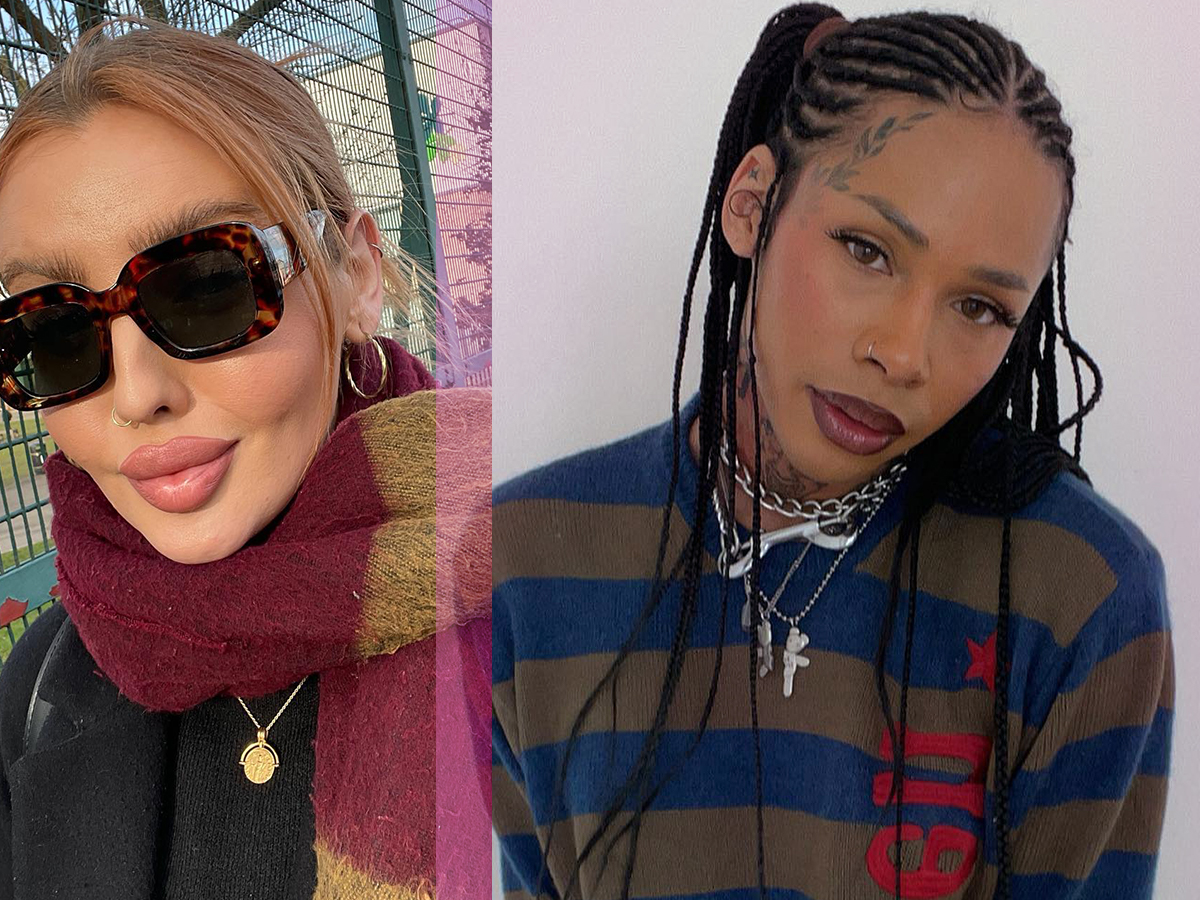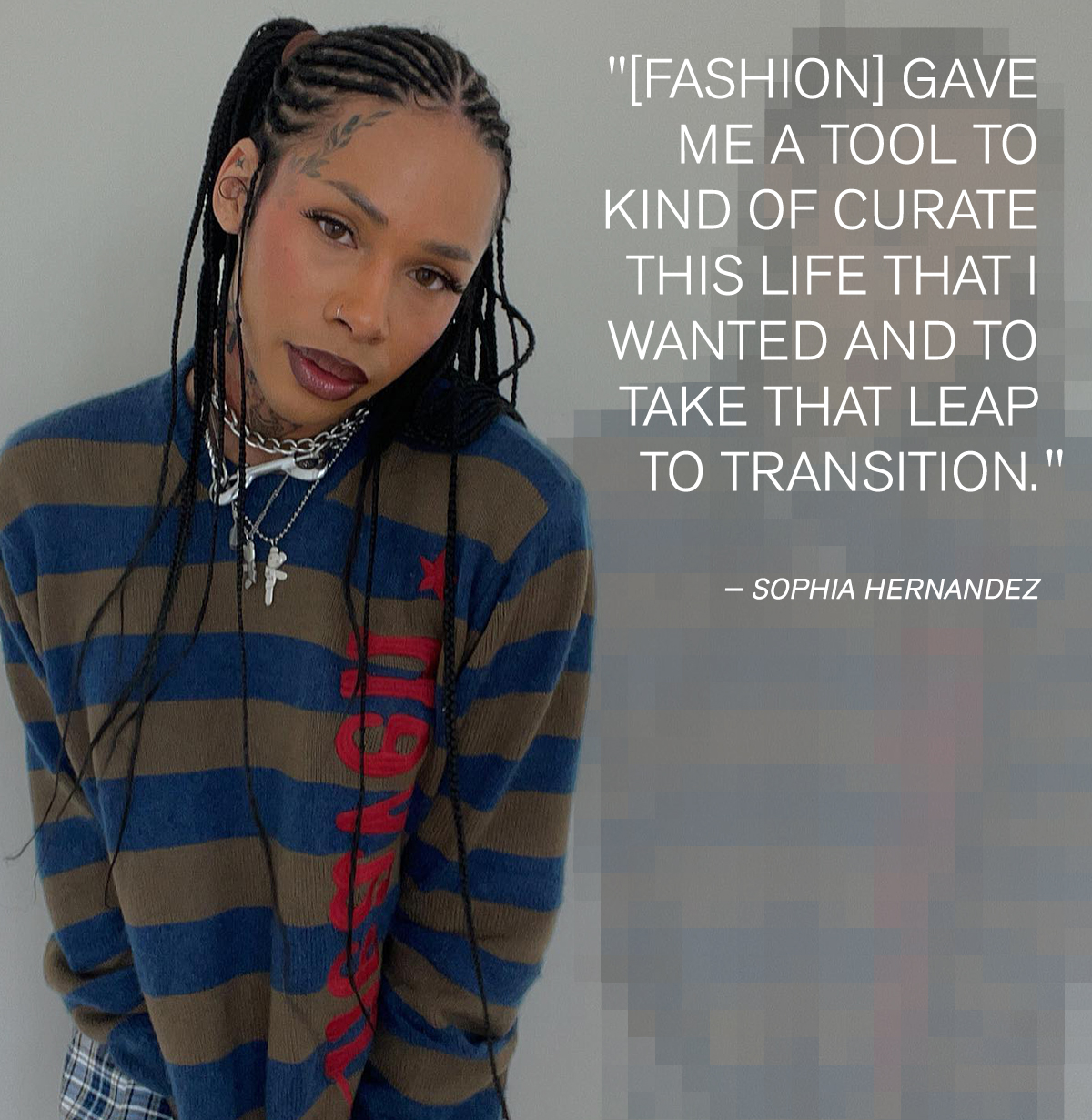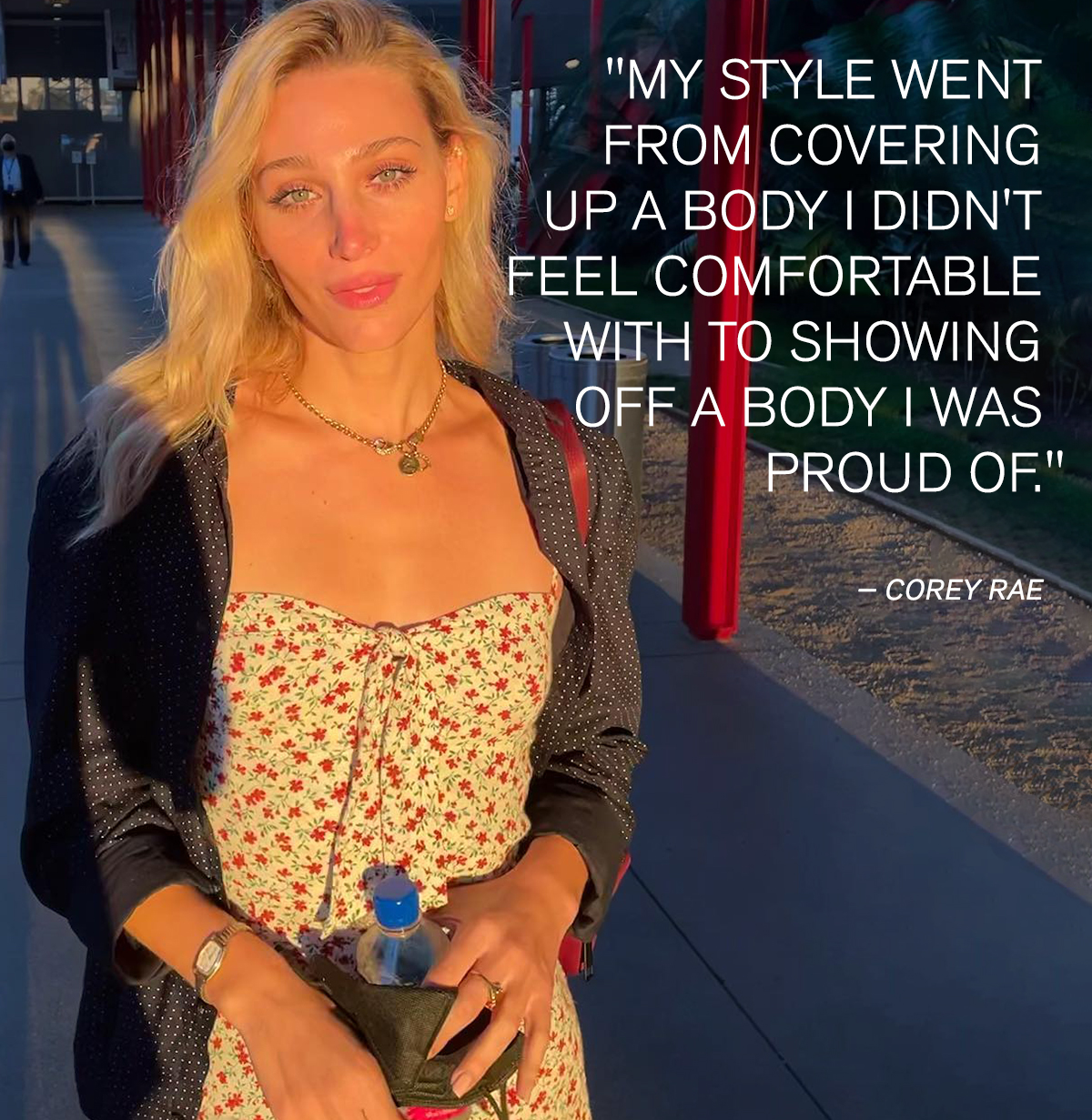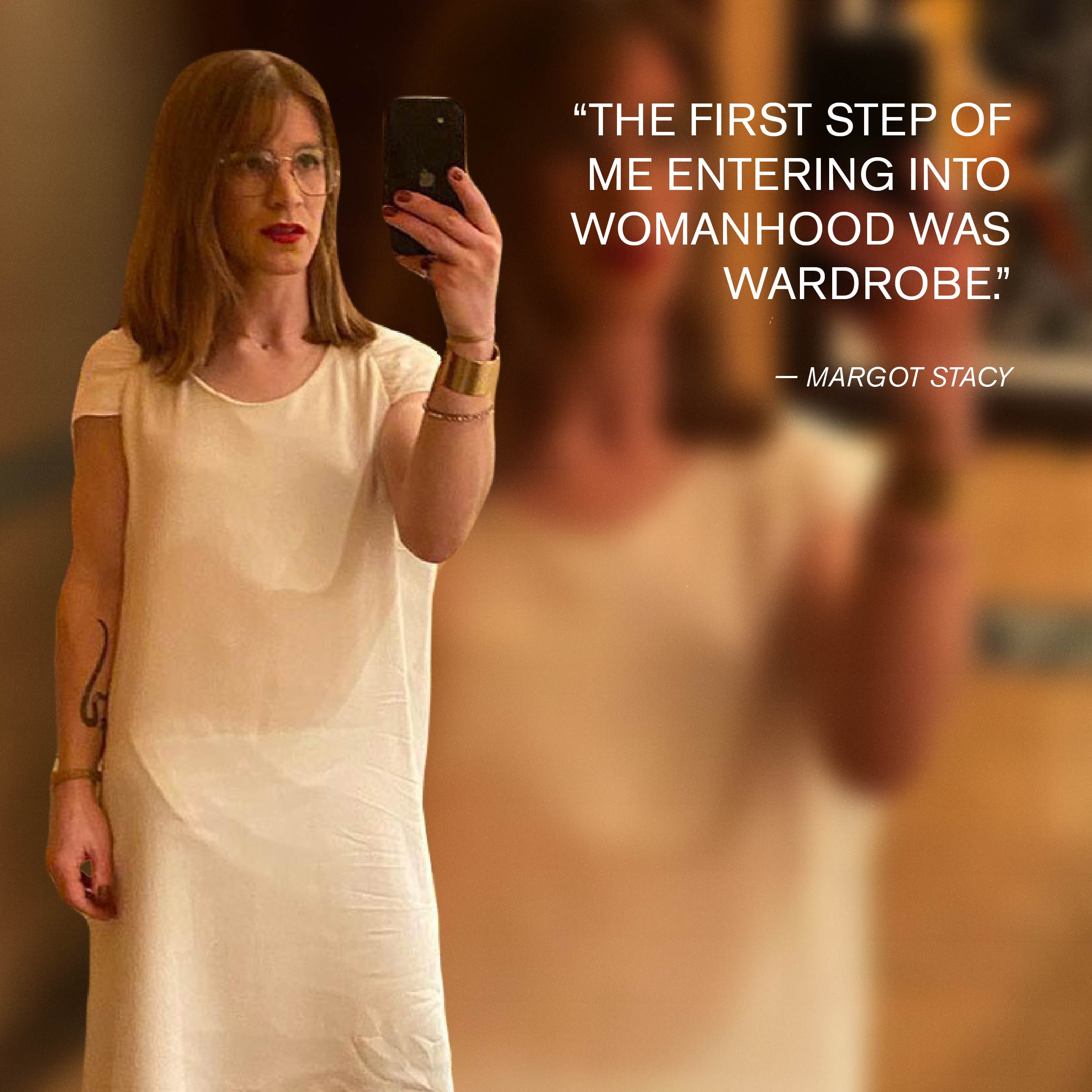For Trans Women, Fashion Is More Than Just Clothes—for These 4, It's Everything

"When I started my transition, I was so fixated on performing hyper-femininity," says 27-year-old Sophia Hernandez (she/her). "I felt as though I had to really bend over backward for the male gaze and to get the approval of other women to prove that I, too, was a woman." One way that Hernandez, a Brooklyn-based model, did so was with her clothes. "I felt this really dire need to make sure that my gender was validated by the public, so [my style] was super-high femme, with [lots of] dresses, skirts, and crop tops. I only wore heels or loafers. I wouldn't be caught dead in a sneaker," she says. "I used it to not be ostracized by my community [and as a way of] trying to fit in." For her, traditionally feminine clothing acted as a shield.
While it isn't her style as she understands it today, dabbling in a hyper-feminine way of dressing was, in some ways, essential for Hernandez. In fact, it was what kick-started her transition in the first place. "When I took that first step by wearing a skirt, it was the most transforming thing ever, and it was just the catalyst to who I am today," Hernandez says. All it took was a bit of exploration in order to develop a sense of style that worked for her rather than everybody else. "Now, I'm at a point where I'm so comfortable with my femininity that I kind of play into both of these roles of feminine and masculine energy, knowing that it's a spectrum, and no matter what I do, I can still shine and still be the woman I know I am," she adds.
This journey of sartorial self-exploration and actualization isn't singular to Hernandez. Rather, fashion can play a significant role for many trans women and transfeminine people. For the trans community, fashion is more than just a collection of material goods—a dress on a hanger or shoes in a box. Instead, it can be the pivotal first step in making their outside appearance match the one that's long been trapped inside. "[Fashion] gave me a tool to curate this life that I wanted and to take that leap to transition," says Hernandez.

Danielle St. James (she/her) went through a similar trial-and-error process when she first transitioned. "I think the interesting part of style when you're a trans person is that you go through the teenage experimental phase later in life than your cis counterparts," the 30-year-old London-based founder of Not a Phase and tucking underwear brand Zoah explains. "So as my transition developed, I was working out what was me and what wasn't." Like Hernandez, this process allowed St. James to realize that fashion erring on the side of feminine just wasn't her thing. "I know now that I'm not a heels person. I'm not really a skirt person, I don't like sparkles, and I don't like fuss,” she says. "It's ironic that I have ended up a tomboy."
Though 28-year-old Los Angeles–based model, speaker, and activist Corey Rae's (she/her) journey was equally explorative, it led to the opposite conclusion style-wise. Proving just how personal one's style can be, Rae's sartorial journey began with more oversize and shape-concealing garments. "While I was transitioning, I wore clothes that didn't necessarily fit my body, because most of my outfits were given to me by my mom or friends," she tells Who What Wear. After her first year of college, Rae had gender-confirmation surgery, which allowed her to finally dress the way she'd always wanted to but never thought she could.
"My style went from covering up a body I didn't feel comfortable with to showing off a body I was proud of," she says. Rae says she spent years showing off her new body in tight and revealing clothes. Then, after moving to L.A. and beginning her work in the entertainment industry, she started to develop an aesthetic that was more about her than what she thought she should be. "Now, after becoming my true self and learning more about what's flattering for my body, I feel I can express who I really am through fashion," she says.

For Rae, St. James, and Hernandez, fashion provided an easily accessible way to figure out who they were when the answer to that question was no longer dictated to them. It freed them to determine their outward appearance on their terms and to test out different styles and aesthetics until they found the look that just clicked.
For Margot Stacy (she/her), a 33-year-old executive assistant living in Dallas, it wasn't always clear why she loved to experiment with the way she dressed. Stacy spent the majority of her life shape-shifting into different "imagined subcultures," forever looking for one that fit. "It wasn't as much gender play in my youth," Stacy says. "I'd go faux punk [with] spiked hair [and a] Viva La Bam [look] for a time, then, weeks later, Kanye backpack rapper by way of Hollister style—all while surrounded by a sort of unstyled early-to-mid-2000s milieu." But while Stacy found it easy to change her style back then, nothing really stuck. "Fast-forward almost 20 years, and I come to acknowledge my own transness, and it all clicks for me," she says. "All the manic obsessions and identities I'd taken on were centered on this thing about me that I never had a language for. My syntax had just always found expression in appearance and personal style."
Fashion gave Stacy a way to nonverbally demonstrate something she didn't even know about herself yet. Now that she does know who she is, fashion's role in her life remains equally paramount. "I feel like I emerged through all that multitude of experience and into owning my transness, which for me means I finally know how I want to dress and present," she says. "I'm not reaching for something to stick [anymore]. I'm here, and despite not having lived out for even a year, my style is fully fleshed [out] and crystallized."
After spending her first year out cooped up mostly at home due to COVID, Stacy is ready to show off the person she's become as well as the developed sense of style that she could only debut after coming out: "I'm finally … out. So I dare not stifle that by denying [myself] the languages of fashion and style." For her, getting dressed every morning is now an experience that warrants an overwhelming amount of gratitude. "I just find so much joy in crafting an outfit. It's a build of creative energy for me, and I love beginning my days in that mode, which also goes back to my transness and living out," she says. "Being trans is euphoric to me, wherein all my creativity finds its ultimate site of expression."

Put that way, transness and style seem to have an almost unbreakable bond. "The first step of me entering into womanhood was wardrobe," says Stacy. Rae expressed the same idea: "[Fashion] quite literally made my dreams come true because it was the first way I could express my femininity." Hernandez also says that "fashion was that tool [she] needed to feel comfortable to explore [her] gender." Even St. James recognized the significant role fashion had played in her life. "Pop on mum's heels and, all of a sudden, you're Pamela Anderson," she says. "I was, at least."
These are four women with vastly different backgrounds and stories, whose journeys to figuring out themselves led them on various paths. And yet they all ended up expressing roughly the same sentiment. Despite being nothing more than the clothes on our backs in the most general sense, fashion is perhaps the great unifier, especially for people who've spent much of their lives trying to match who they are with what body they were born with. Fashion is a new beginning. It's a way to play around with different looks and styles until one comes along that makes perfect sense. Above all, it's a way to communicate who you are without putting it into words. "Maybe it's that I really feel that what and who I am, especially with respect to my gender, is impossible to verbalize," Stacy says. "I want to express [myself] through style."
This post was originally published on an earlier date and has since been updated.
Eliza Huber is an NYC-based senior fashion editor who specializes in trend reporting, brand discovery, and the intersection of sports and fashion. She joined Who What Wear in 2021 from Refinery29, the job she took after graduating with a business degree from the University of Iowa. She's launched two columns, Let's Get a Room and Ways to Wear; profiled Dakota Fanning, Diane Kruger, Katie Holmes, Gracie Abrams, and Sabrina Carpenter; and reported on everything from the relationship between Formula One and fashion to the top runway trends each season. Eliza lives on the Upper West Side and spends her free time researching F1 fashion imagery for her side Instagram accounts @thepinnacleoffashion and @f1paddockfits, watching WNBA games, and scouring The RealReal for discounted Prada.